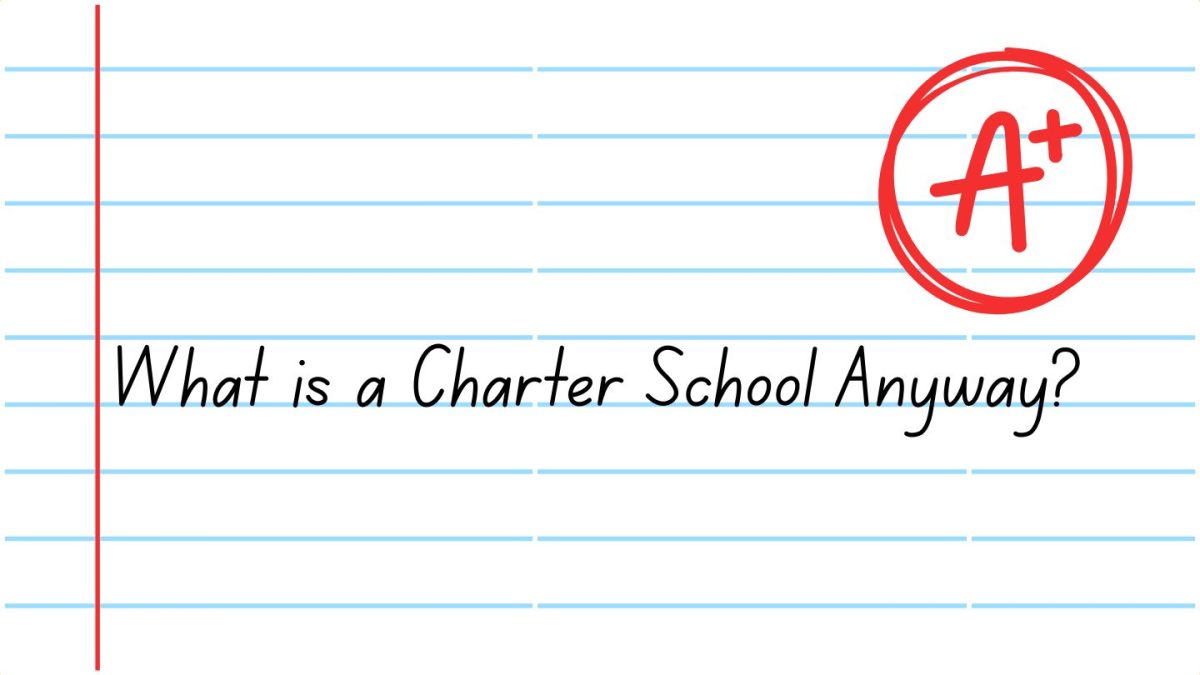This story contains graphic descriptions of sexual contact, including sexual assault, and can potentially be upsetting for some readers.
After being placed on paid administrative leave beginning Jan. 18, an arrest warrant was issued for science teacher and assistant boys’ soccer coach Dustin Mead March 6. Mead was charged with sexual abuse in the third degree, which is a class “C” felony, as well as sexual exploitation by a school employee, a class “D” felony.

Dustin Mead’s mugshot. Mead was arrested March 6.
Johnston Police Department Lieutenant Tyler Tompkins told The Des Moines Register that Mead turned himself in to police after being advised by his legal counsel to do so. This is not uncommon. When a criminal complaint is filed by the county attorney, an arrest warrant is issued. The person can arrange to turn themselves in, or law enforcement officers can seek out and arrest the person. “That doesn’t mean a defendant is admitting guilt, that just means the defendant knows there’s a warrant out for his arrest and he’s choosing to turn himself into law enforcement as opposed to the law enforcement seeking him out to execute the arrest warrant,” attorney Luke Craven said. Craven was contacted for this story to provide insight on the legal process. He is not, however, part of Mead’s legal team, nor does he have access to classified evidence, only what is available as public records. Craven made no comments as to the merits of the prosecution or the defense case.
Tompkins told The Des Moines Register that the investigation stemmed from allegations brought forth by school district officials. Tompkins also said the case involves multiple victims, however only one victim is listed in court documents currently available to the public.
As it is still an ongoing investigation, many parts of court documents are classified such as witness testimony or any other evidence. However, to charge the person being accused, called the defendant, an investigating police officer must submit facts they believe to be true that support why the defendant may be guilty, called the criminal complaint. This information is a public record. Johnston Police Officer Ryan Hanssen wrote in the complaint the alleged facts for sexual exploitation by a school employee. “Throughout the course of the 2015-2016 school year, the defendant (Mead) reportedly provided the victim with grades that she had not earned, made inappropriate sexual comments to the student, touched the student’s clothed upper inner thigh, grabbed the student’s buttocks over her clothing, kissed the student and digitally penetrated the student without her consent,” he wrote.
The criminal complaint states that these incidents all allegedly occurred inside of the high school in a pattern of conduct done for the purpose of arousing or satisfying Mead’s sexual desires. Mead was the victim’s anatomy teacher.
The details for third degree sexual abuse are more graphic. “During the second semester of the 2015-2016 school year, the defendant did digitally penetrate the victim’s vagina without her consent,” Hanssen wrote. “This incident reportedly occurred inside of the Johnston High School. The victim described freezing up during the incident and not knowing what to do.”
For both charges, the listed general probable cause was that Mead was identified by witnesses, other physical evidence and witness statements. The actual physical evidence is not listed or shown.
A no-contact order was issued March 7 for all minors excluding Mead’s children and the victim until further notice of the court, the case is dismissed or a sentencing occurs.
A person can be tried and convicted based off witness testimony alone. Circumstantial evidence is indirect evidence. An example of indirect evidence would be if a person saw a defendant enter a victim’s home just before hearing a scream, and then seeing that same defendant run out of the home. Because the person did not see the defendant actually harm the victim, the testimony is only circumstantial because it relies on an inference. Circumstantial evidence is contrasted with direct evidence. Direct evidence is typically referred to as eyewitness testimony. An example of direct evidence would be if a person actually saw a defendant perpetrate the crime against the victim. It is not necessary to have direct evidence to convict a defendant. “It is possible for a defendant to be convicted based entirely on circumstantial evidence,” Craven said. “You don’t need direct evidence necessarily. It certainly makes a prosecutor’s case stronger if they do have direct evidence but you don’t necessarily need it.”
When news broke of Mead’s arrest, many students were upset. “I was initially really shocked because I didn’t think that he was like that,” Libbie Smith ‘18 said. Smith was in Mead’s advisory class. “When I found out I honestly couldn’t believe it for a little bit. It was a huge shock to me.”
As both charges are criminal, the trial process began when he was arrested and will continue at the same time as the investigation does.
After a person is arrested, usually within 24 hours they will appear before a judge to determine if bail should be set. “Bail is typically set for a certain amount of money and an agreement by the defendant that the defendant will show up at the designated time that the court says the defendant needs to be in court,” Craven said. “If the defendant doesn’t show up, or violates any other conditions of the bail set by the judge, then another warrant will be issued for the defendant’s arrest.”
Court records show that Mead’s bail was set at $50,000 for both charges and $100,000 total. Mead paid $10,000 through a bail bond company March 8. “Right now it appears that he is out on bail, which basically means that he’s not in jail,” Craven said. “He’s not in custody, and he agrees to show up to court when he needs to show up to court.”
A date for a preliminary hearing was set for March 17, but after being continued, or pushed back, a week, Mead and his attorneys waived the preliminary hearing. In Iowa, preliminary hearings are rarely held. “There’s typically not a lot that actually occurs at these preliminary hearings anyway so a lot of times the defense attorneys will just waive the preliminary hearing,” Craven said.
Because the preliminary hearing was waived, an arraignment was set for April 21. An arraignment is the first formal opportunity that the defendant has to respond to the criminal charge in the form of entering a plea, or whether or not they admit or deny committing the alleged crime. Usually, defendants enter a plea of not guilty. There are two ways an arraignment can happen. There is a form that the defendant can fill out and sign, or they can appear in court in front of a judge. “They will essentially say to the judge ‘I’ve been charged in my true and correct name, and I choose to plead ‘blank,’” Craven said.
Meanwhile, the Johnston Police Department is still investigating. Students in Mead’s classes were sent subpoenas by mail stating that the police wished to access students’ records to see which female students were in Mead’s classes. “It felt a lot more real on levels of their involving authorities,” Smith said. “At first when you hear rumors going around school at first you’re like, ‘this isn’t really viable, I can’t believe this right now,’ but when they’re getting officials involved it feels a lot more like it’s actually happening.”
Due to all citizens’ right to a speedy trial, Mead has 90 days in which to be tried from the date of indictment or the day the prosecution files what is referred to as the trial information. However, this is unlikely to happen. “The defense needs time to analyze all that evidence, to talk to all the witnesses and to take depositions,” Craven said. “[A deposition] is where you ask questions to the prosecuting attorney’s witnesses or fact witnesses and that typically requires a lot more time than 90 days.”
There are a few situations in which Mead might not actually go to a jury trial. The prosecution and defendant could agree on a plea deal that is approved by the judge, or it is possible to waive the right to a jury trial and instead be tried in front of one judge. However, many times a defendant will demand a jury trial because it is sometimes viewed as more beneficial to a defendant because, to convict a defendant in a criminal case, all jurors must unanimously find the defendant guilty beyond a reasonable doubt. This is why jury trials are often chosen by a defendant. “In some cases, due to the nature of the criminal charges, it would definitely be a consideration for a defendant as to whether he or she wants to have the case tried in front of a jury or the bench, depending upon how he or she believes the case would be viewed by a jury,” Craven said.
Mead was charged with two different levels of felony, which have different maximum jail time or fines. There are various levels of crime in Iowa. The least severe are simple misdemeanors such as traffic violations, then serious misdemeanors and aggravated misdemeanors. Then, there are felonies classes “A” through “D.” The lowest felony class is class “D” felony, while class “A” felony is the most severe, such as murder or offenses that are punishable by up to life in prison.
Mead is charged with a class “C” felony and a class “D” felony. The maximums outlined for these charges are unlikely to happen. A class “C” felony is punishable by up to ten years in prison and a fine of $1,000 to $10,000. A class “D” felony is lower and less punishment. Class “D” is punishable by up to five years in prison and a fine of $750 to $7,500.
If Mead goes to trial, and is found guilty of both charges, the sentencing is just as unpredictable. There could be a plea arrangement, or the judge would have to make a decision on how long the prison sentence would be for each charge, and whether to run the sentences concurrently or consecutively. Concurrently, he serves time for both sentences at the same time. If served consecutively, then he serves one charge, then the other charge. “That’s not real common, usually they’ll run in concurrently and there’s no guarantee a defendant would be sentenced to the entire duration anyway,” Craven said. “In addition to that, a defendant would most likely be granted parole at a certain period short of the five or ten years.”
The entire investigation and trial may take more than a year. During this time, Smith thinks it is good for students to help each other process information. “I think it’s important for students to talk about it,” she said. “Not necessarily in the rumor sense, but just to understand what’s going on because when something like this happens it’s just an interruption to your normal life.”
She also believes it is necessary for students to not spread false information. “There’s definitely crazy things that people have been saying,” she said. “It’s important to just remember that you don’t know anything that happened unless you were involved.”
Executive Director of Human Resources Laura Kacer was unable to comment as it is an open investigation. “I can confirm that Mr. Mead continues to be on paid administrative leave and we are cooperating with the investigation,” she said in an e-mail. “Matters like this are difficult to discuss because of the need to keep a person’s personnel matters private.”
This is not the first time a Johnston teacher was arrested on sex abuse charges. Former Summit Middle School teacher Steven Williams was convicted in 2012 after sending sexually explicit messages to a student he believed was 14 years old, but was actually an undercover Clinton County Sheriff.















Soneeta Mangra-Dutcher • Apr 8, 2017 at 5:07 pm
The only problem with the article regarding the allegations against the Johnston teacher, is the Black and White staff were damned from the onset. They were damned if they covered it and they were damned if they didn’t.
They made a choice. They covered a very important topic that is affecting their peers, school and the community. They choose the path of good journalism, if you don’t know what that is, look up the good elements of journalism. “Their first obligation is to the truth, it’s first loyalty is it’s citizens…”(https://www.americanpressinstitute.org/journalism-essentials/what-is-journalism/elements-journalism/)
What is happening now however, is where I take issue. These are good young people, they are kind, caring intelligent students. They work hard at what they do, they do not make decisions in a bubble, they weigh what the effects will be, the consequences of certain articles. They are always thinking. They are always looking at different angles.
My issue is for another parent to call in to question these young adults character. From one article, from one story, one very hard to cover story, you want to say they lack a “moral compass?” You specifically say these students do not represent the pillars of character they have been taught since kindergarten? How about you get to know the students, ask them why they covered the story, why they went the route they did? I think you will find their “moral compass” is right on point. I think you will find that the pillars of caring, responsibility, trustworthiness, respect and citizenship are strong with these young people.
I am not an easily offended person, but I take great offense for another parent and community member calling out these journalists, including my child. I am offended because I know them, I have interacted with many of them, I know the struggles they go through and the amount of work they put into this work.
It truly is a matter of perspective in how you viewed the article, because I could make an argument completely different from yours supporting how the pillars of character are supported by the covering of this subject.
Caring – The newspaper staff care about the students, staff and administration at Johnston, covering the story and not sweeping it under the rug, pretending it didn’t happen and facing it with bravery and conviction to do what is right. They have a responsibility to the entire JHS student body, they covered it in the best way they felt they could, trying to be as sensitive yet informative as they could.
Respectful – They did not use the name of the student, they used a 3rd party attorney with no connection to the allegations, They did not accuse anyone, only reported the legal documents that they had access to, there are far greater details in the reports they did not share.
Trustworthy – How can you say it was not? They reported on documents they received from the court, they didn’t make up the allegations, they did not side with one party or the other, they reported on a situation that is effecting their teachers and peers, if they didn’t cover it they would be called out for not doing so.
Fair – again, they didn’t accuse anyone, simple stated what the court documents said and process of our judicial system, they have to be fair to more than one singular person, and sometimes covering a story has to be for the greater community, not single minded in its coverage
Responsible – covering the story was the most responsible way to handle the situation, they took an approach that was about the processes of our system, a what’s next and how does the school move forward. They didn’t get caught up in blaming or convicting someone in the media, simply reporting what they could in the most responsible way they could.
I applaud the other students who have commented, they see the article from a different lens. They understand what the writers were trying to do. I am proud of them for speaking up.
Are there some details in the article that could have been left out, yes probably but as one of the commenters pointed out, how are others supposed to know if something that happened to them is wrong or not? Someone came forward and was brave and told their story, there is no shame in that. That is a powerful message. A very powerful message.
For those kids in the schools making jokes or upsetting remarks those are the kids you might want to take offense to, those that think victim shaming is appropriate, those that think making jokes about sexual assault is funny, those students might be missing that “moral compass” you discussed. But that is a whole other topic because where did they learn to make those jokes, where did they learn that sexual assault is funny or accepted?
Not from the Black and White.
Respectfully,
Soneeta Mangra-Dutcher
white cheddar cheez it • Apr 7, 2017 at 9:41 am
It’s always nice to hear about people continuing to pretend to care about sexual assault victims while they’re defending their attackers and/or blaming the victims
white cheddar cheez it • Apr 7, 2017 at 9:41 am
Turning yourself in doesn’t equate to being guilty.
Aditi Dinakar • Apr 6, 2017 at 11:47 am
To Above Parent:
Here’s the short version: Stop shaming victims of sexual assault.
Here’s the long version:
I am truly disappointed in your response to the article under the disguise of protecting students and Mr. Mead’s safety. As a Johnston Alum and a current college Junior, I can speak from experience that the failure to talk openly about sex, consent, sexual assault, and any other form of abuse is the true negligence and failure of a student’s community. I am ashamed that you took so much time to tear down the hard work, journalism, and public good that Kathryn and her team have accomplished by publishing this article. Your opposition to news and the dissemination of factual information regarding sexual assault is truly harmful to this community.
You claim that Kathryn’s article was distasteful and contradictory to the five pillars. Let’s take another look.
Was it Caring? You only discuss caring as being deserved by Mr. Mead and his family, but what about the victims? Your inflammatory language only shows disregard for the victims of this crime.
No, this article and the crime that happened is not “disgusting.” Your repetitious use of this word is shaming the victim(s) for what happened to them. By insinuating that the victims must feel shame because people are discussing these charges is hypocritical – encouraging them to stay quiet to avoid embarrassment or shame means you think being a victim of assault warrants embarrassment. You are saying she should feel shame for something completely out of her control? I don’t think that’s very caring.
Was it trustworhy? Absolutely. notice the wide variety of sources the author called upon to write this article. Clearly, she knows how to do her job.
Was it responsible? Hell yes. You allege that there is no benefit from this article. However, the community benefits from knowing this information. If we continue to avoid discussing what the perpetrator allegedly did to the victim, how will future victims of sexual abuse know what is happening to them is wrong? Where will they find the courage to speak up? There are so many victims of sexual abuse who are discouraged from sharing their story because others will not approve. You are just perpetuating this problem.
As a current student at an institution that has experienced a recent public sexual assault case, the only thing that alleviates the problem is fair coverage of the situation at hand. Without knowing the facts, we cannot fix the problem.
Was it fair? Absolutely. As an alum whose locker was next to Mr. Mead’s for three years, I have a right to be updated on this situation. Your willingness to let this go unreported and help alumni like me stay in ignorance is truly concerning.
Was it an example of citizenship? Yes! Being a good citizen means being honest about the situation. She was doing so.
Other Notes:
Saying a student should “protect themselves” from being assaulted? Protect themselves from what? Being manipulated by an adult? Being coerced into sexual activity? Why not teach men like him not to rape? Oh yeah, because this is a woman’s fault. Sexual abuse is not something we can shield ourselves from with modesty, but something we should teach perpetrators to stop doing. Stop the victim blaming.
No, describing legal charges is not “written pornography.” Porn is “intended to stimulate erotic rather than aesthetic or emotional feelings.” Is that the intention of the Johnston Police Department? Yeah, I didn’t think so either.
I strongly urge you to rethink your position on this article with the victims, students, and other parents in mind. Maybe if you feel so compelled, you can help start actual programs that stop sexual assault and protect everyone, like bystander training, workshops and education on consent, strong sexual education programs, and other efforts to stop rape culture. I don’t think degrading this hardworking student’s article is the way to change the problem.
Jakob Knowlton • Apr 3, 2017 at 12:18 pm
As a student of Johnston High School, the only poor taste I see is the fact that people are spreading rumors about Mr. Mead and the case surrounding him, so to see that a news article is setting the story straight in terms of the facts and events surrounding the allegations is demonstrative of our student body taking the responsibility to be knowing and invested in the school district and the people that make up this society we live in. As for the graphic and disturbing details of the case, I think it is important to lay out all of the facts and not censor important details for the sake of sensitivity, seeing as you will have to face the harsh realities in real life. In terms of not encompassing the fact that Mead is innocent until proven guilty, it was actually insinuated by the fact that he turned himself in. Seeing as there was an arrest warrant out for him, he saved the shame of being arrested in front of his family by turning himself in, which is not an admission of guilt, but a diplomatic way of acting in a time of resounding falsity. The point of this article wasn’t to further his case or to spread “junk” — as you so arbitrarily defined this article, but the point was to have a piece of writing that displayed all of the facts and information in one spot, seeing as many different sources and statements were being made prior to this article. As mentioned, this article is having an impact on students – as it should. This wasn’t written just for fun, it was written because it is an important ongoing event at our school that the staff and students have close ties to, seeing as we are all part of this building. News isn’t always pretty and information can’t always be a glorified case of happy go-lucky people doing amazing things. And I am personally glad that the Black and White isn’t ignoring that.
Good job.
Jessica Gehrke • Apr 1, 2017 at 4:21 pm
I am writing this because I care about young people and their character, and I think this article in the Black and White is degrading to the pillars of character that the Johnston Community Schools promote and teach from day one of kindergarten. They should not be abandoned.
I am the parent of a sophomore boy at JHS and have had three other kids graduate from Johnston. I want to make clear that none of my four kids have had Mr. Mead as a teacher, I do not know him, and I don’t even know anyone who does. I am not in any way supportive of anyone who is a proven sexual offender. But this article sickens me on behalf of Mr. Mead and his family, and it sickens me on behalf of the JHS student body. First of all I think it was in the poorest of taste to publish details of the allegations against Mr. Mead. They are made available to the public and the public can search them out if they want them. Publishing the graphic and disgusting details of the allegations did nothing to help anyone or put to rest any rumors. If nothing else, it made people want to know more. In a world of sexual ugliness, perversion, and self-gratification as a standard moral compass, this did nothing but promote perversion and polish that compass. Did the student body really benefit from the details of the digital penetration allegation? WHAT possible reason could justify putting that out there. It is nothing but written pornography shrouded in a “current event” package for something to put in your newspaper this month. You can’t say there was any benefit…you didn’t say how to protect yourself from predators. You didn’t say that kind of touching was inappropriate between teacher and student even in cases where it might be consensual. (I am NOT saying this was by any means and would have no idea anyway–but sexual predators groom their victims and sometimes they are groomed in to believing its OK or even groomed to like the attention–yes it is disgusting but perhaps that is one angle you could have featured–but you didn’t.) While your research and explanation of the judicial process was fairly comprehensive, you failed to mention the most standard of beliefs and assumptions of the American judicial system–not to mention VERBAL AND WRITTEN instructions to a jury– is based on and that is a person is presumed innocent until proven guilty. You did not say that. I read the article top to bottom twice before I wrote this. Mr. Mead–whether you like it or not–IS innocent until a judge or a jury of his peers judges him otherwise. Your article was grossly negligent in the omission of that very foundational fact. You spoke as if the allegations were true–never clarifying beyond the word “allegation” that he was indeed innocent…until…
Secondly, as a parent I want to speak to the moral compass of this paper and the young people who write for it. Just because you can does not mean you should. What is permissible is not always good or beneficial or helpful or necessary. Your article did nothing to further the cause of the victim or potential victims, nor did it do anything for Mr. Mead at all…except hurt him and his family. Not that your job is to further causes or help…I’m not saying it is. But why not? Why, when there is so much awfulness in this world, when terrorism is at an all-time high, when random shootings take place at malls, schools and against police officers, why report and spread more junk? You can. It is permissible. It is “what’s going on.” It is in your school. But you don’t have to. I encourage you all to be above that. Think of the hurt you may have caused Mr. Mead’s family–his wife and his children, his Mom and dad, his siblings, his nieces and nephews…and think of the victim who’s very name appears in a google search associated with this story and who’s name is whispered in your hallways. If she is truly a victim then you are only continuing to victimize her by giving the gory details of what allegedly happened to her. Imagine the embarrassment and shame she could feel. If she is a victim then there is no shame…but perhaps there is now because 1200+ kids at JHS know that she was allegedly “digitally penetrated.” No wonder vicitims of sexual abuse stay quiet…the humiliation of of being a victim and all the other lies that victims tell themselves only become truth to them in the evidence they see being portrayed in media like the Black and White. To your supervisor…you are having a direct impact on the lives of these students and you are helping to shape who they become. This type of approval of a disgusting story only solidifies that anything is permissible if it is shrouded in partial truth. You are doing nothing beneficial for your students if you are NOT re-enforcing the very pillars of character these kids have had engrained in them since they set foot in kindergarten in this district…Was this caring? Not to the victim and not to Mr. Mead or his family. Was it respectful? Not to the victim or Mr. Mead. Was it trustworthy? Not when you failed to mention the presumption of innocence. Was it fair? Same answer. Was it responsible? Not when you hurt people and provide no sound reason for the details to be made public–such as how a student can protect themselves. Was it an example of citizenship? Not if it doesn’t meet the cumulative criteria for the other five pillars. You are chopping at the foundation of the very pillars of character that Johnston Community Schools promote and you are felling the entire forest when you put it in media. Good job.